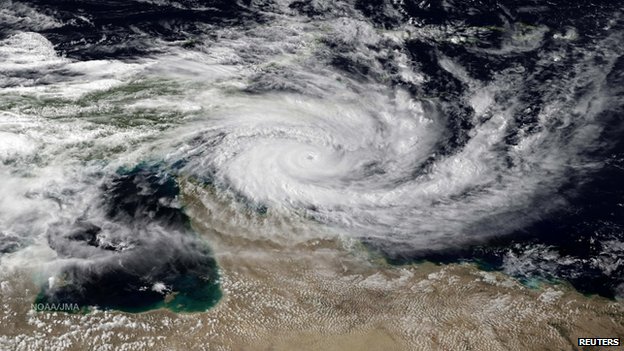Cyclone Ita hit North Queensland last Friday, called one of the worst ever in the region.

Cyclone Ita hit North Queensland, Australia as a category 3 storm on Friday into Saturday (local time), bringing strong winds and flooding rain to the region. Wind speeds higher than 120 km/h were reported near the small town of Cookstown, Australia and speeds near 160 km/h were reported at Cape Flattery. In addition, more than 125 mm of rain fell in Cookstown. However, the highest reported rainfall total was 311 mm in Bairds. Cyclone Ita hit the Soloman Islands before impacting Australia, causing 21 deaths there. The number of deaths, were there any, from Ita in Australia is not presently known. Luckily, the part of North Queensland hit by Ita is sparsely populated, helping to minimize the impact of the storm.
Cyclones are a common phenomenon in the waters surrounding Australia. Also called willy-willies by locals, cyclones are the same as hurricanes, except that they occur in the Pacific and Indian Oceans, rather than the Atlantic Ocean. The main requirements for cyclone formation are surface water temperatures of at least 27 degrees Celsius and weak vertical wind shear (the absence of a jet stream overhead). These conditions are most often met in the tropics, though cyclones and hurricanes have been known to impact areas at higher latitudes late in the summer and early in the fall.
Sources:
